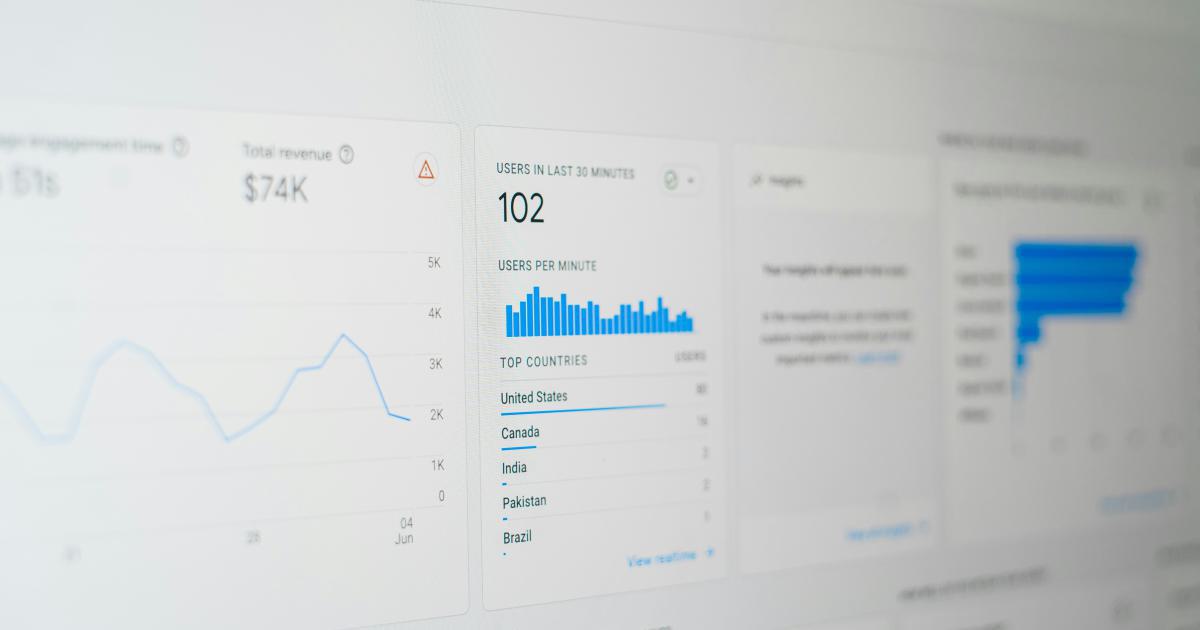What Hidden Benefits Do HTML Sitemaps Offer SEO?


Introduction: Unveiling the Power of HTML Sitemaps for SEO Success
While the importance of HTML sitemaps in search engine optimization (SEO) is well-known, many marketers and website owners may not fully understand the hidden benefits they offer. Beyond the traditional role of guiding search engines through a website's structure, HTML sitemaps can provide a wealth of additional advantages that can significantly improve a website's search engine visibility and overall performance.
In this comprehensive article, we will delve into the lesser-known benefits of HTML sitemaps and explore how they can enhance your SEO strategy. From improving site navigation and user experience to boosting indexation and content discovery, we'll uncover the hidden gems that can take your website's search engine rankings to new heights.

The Fundamental Role of HTML Sitemaps in SEO
Before we dive into the hidden benefits, let's first understand the core purpose of HTML sitemaps and their importance in the world of SEO.
An HTML sitemap is a hierarchical, user-friendly representation of a website's content and structure. It provides a clear and concise overview of all the pages on a website, making it easier for search engines to crawl and index the site's content.
Improving Crawlability and Indexation
One of the primary functions of an HTML sitemap is to enhance a website's crawlability and indexation by search engines. By including a sitemap, you're essentially providing a roadmap for search engine bots to navigate your website more efficiently. This can lead to faster and more comprehensive indexation of your content, ensuring that your pages are readily available in search engine results.
Ensuring Complete Content Discovery
HTML sitemaps play a crucial role in ensuring that search engines discover all the relevant content on your website, including pages that may be difficult to find through traditional navigation. This is particularly important for large or complex websites, where certain pages may be buried deep within the site structure or accessible only through specialized links.
Facilitating Navigation and User Experience
While the primary audience for an HTML sitemap is search engines, it can also benefit your website's visitors. A well-designed sitemap can enhance the user experience by providing a clear and intuitive navigation system, making it easier for users to find the information they're looking for.
Now that we've established the foundational role of HTML sitemaps in SEO, let's explore the hidden benefits that can elevate your website's performance and search engine visibility.
Enhancing Site Structure and Navigation
One of the lesser-known advantages of HTML sitemaps is their ability to improve a website's overall structure and navigation, which can have a significant impact on SEO.
Optimizing Internal Linking
An HTML sitemap can serve as a powerful tool for optimizing your website's internal linking structure. By including links to all the pages on your site, you're creating a network of interconnected content that search engines can easily follow and understand.

This strategic internal linking can:
- Distribute link equity (also known as "PageRank") more evenly throughout your website, ensuring that all pages receive a fair share of authority and relevance signals.
- Improve the overall user experience by making it easier for visitors to navigate and discover related content.
- Enhance the contextual relevance of your pages, as search engines can better understand the relationships between different sections of your website.
Facilitating Hierarchical Structure
HTML sitemaps can also help you establish a clear and logical hierarchical structure for your website. By organizing your content into a well-defined tree-like structure, you're providing search engines with a better understanding of the importance and relationship between different pages.
This hierarchical structure can:
- Showcase the most important and relevant content on your website, guiding search engines and users to the most valuable information.
- Improve the overall information architecture, making it easier for visitors to find what they're looking for.
- Contribute to the semantic understanding of your website's content, as search engines can better comprehend the context and relevance of each page.

By optimizing your website's structure and navigation through the use of HTML sitemaps, you're not only enhancing the user experience but also providing search engines with a clear roadmap to better understand and index your content, leading to improved visibility and higher rankings.
Boosting Content Discovery and Indexation
One of the most significant hidden benefits of HTML sitemaps is their ability to enhance content discovery and indexation by search engines.
Ensuring Complete Indexation
While search engines are designed to crawl and index websites efficiently, there may be instances where certain pages are missed or overlooked, especially on larger or more complex websites. HTML sitemaps can help mitigate this issue by providing a comprehensive list of all the pages on your website, ensuring that search engines have a complete understanding of your site's content.

This can lead to:
- Improved coverage of your website's content in search engine indexes, making it more likely for your pages to appear in relevant search results.
- Increased chances of ranking for long-tail and niche keywords, as search engines can better understand the depth and breadth of your website's content.
- Reduced risk of important pages being overlooked or excluded from search engine indexes, which can negatively impact your overall SEO performance.
Facilitating Faster Indexation
HTML sitemaps can also contribute to faster indexation of your website's content by search engines. By providing a clear and organized roadmap of your site's structure, search engines can more efficiently crawl and index your pages, reducing the time it takes for new or updated content to appear in search results.
This can be particularly beneficial for websites that:
- Regularly publish new content, such as blogs or news sections.
- Frequently update existing pages with fresh information.
- Introduce new products, services, or features that need to be quickly indexed and made discoverable.
Enhancing Content Discovery for Search Engines
In addition to ensuring complete indexation, HTML sitemaps can also help search engines discover and understand the relationships between different pages on your website. By organizing your content in a logical hierarchy, you're providing search engines with valuable context and insights that can improve their ability to surface the most relevant and valuable information to users.
This can lead to:
- Improved visibility for pages that may not be directly linked from your website's main navigation, such as long-form content, resource hubs, or deep-dive articles.
- Better understanding of the thematic relevance and topical clusters within your website, allowing search engines to more accurately determine the overall focus and expertise of your content.
- Increased chances of your website appearing in rich search results, such as featured snippets or knowledge panels, as search engines can better comprehend the context and significance of your content.
By leveraging the content discovery and indexation benefits of HTML sitemaps, you can significantly enhance your website's search engine visibility and ensure that your most valuable content is readily accessible to your target audience.
Improving User Experience and Accessibility
While the primary focus of HTML sitemaps is on search engine optimization, they can also play a crucial role in enhancing the user experience and accessibility of your website.
Facilitating Easy Navigation
As mentioned earlier, HTML sitemaps can provide a clear and intuitive navigation system for your website's visitors. By presenting a comprehensive overview of all the available pages, users can easily find the information they're looking for, reducing the likelihood of them becoming frustrated or bouncing from your site.

This can lead to:
- Increased user engagement and time spent on your website, as visitors can efficiently navigate and explore your content.
- Reduced bounce rates, as users are able to quickly find the information they need without getting lost or overwhelmed.
- Improved overall user satisfaction, as your website provides a seamless and intuitive browsing experience.
Enhancing Accessibility for Users with Disabilities
HTML sitemaps can also play a vital role in improving the accessibility of your website for users with disabilities. By providing a clear and organized overview of your content, sitemaps can help users with visual, cognitive, or motor impairments to more easily navigate and access the information they need.
This can include:
- Assisting screen reader users in quickly understanding the structure and hierarchy of your website.
- Facilitating keyboard-only navigation for users who rely on assistive technologies.
- Improving the overall user experience for individuals with cognitive or learning disabilities, who may benefit from the clear organization and presentation of your website's content.

By ensuring that your HTML sitemap is well-structured and user-friendly, you're not only catering to the needs of search engines but also demonstrating a commitment to providing an inclusive and accessible online experience for all your visitors.
Enhancing Search Engine Visibility and Rankings
One of the most significant hidden benefits of HTML sitemaps is their ability to directly impact your website's search engine visibility and rankings.
Improved Ranking Signals
HTML sitemaps can contribute to various ranking signals that search engines use to determine the relevance and authority of your website. By providing a clear and organized representation of your content, you're demonstrating to search engines that your website is well-structured, easy to navigate, and rich in relevant information.
Some of the key ranking signals that can be enhanced through HTML sitemaps include:
- Site architecture and internal linking (as discussed in the previous section)
- Content relevance and topical authority
- User experience and engagement metrics
- Technical SEO factors, such as site crawlability and indexation

As search engines place increasing emphasis on these signals, the strategic use of HTML sitemaps can give your website a competitive edge in the search results.
Increased Visibility in SERPs
Beyond the direct impact on ranking signals, HTML sitemaps can also enhance your website's visibility in search engine results pages (SERPs). By ensuring that search engines have a comprehensive understanding of your website's content and structure, you're increasing the chances of your pages appearing in relevant searches.
This can lead to:
- Improved visibility for long-tail and niche keywords, as search engines can better match your content to specific user queries.
- Higher click-through rates, as users are more likely to engage with your listings when they can clearly see the relevance and organization of your website's content.
- Increased overall traffic and brand awareness, as your website becomes more prominent in the search results.

By leveraging the SEO benefits of HTML sitemaps, you can elevate your website's search engine visibility and drive more qualified traffic to your pages, ultimately leading to better business outcomes and a stronger online presence.
Measuring the Impact of HTML Sitemaps on SEO
To fully understand the impact of HTML sitemaps on your SEO efforts, it's crucial to monitor and analyze relevant metrics. By tracking key performance indicators (KPIs), you can gauge the effectiveness of your sitemap implementation and make informed decisions to optimize your strategy.
Tracking Indexation and Crawl Metrics
One of the primary ways to measure the impact of your HTML sitemap is by monitoring indexation and crawl metrics. These metrics can provide insights into how search engines are interacting with your website and whether your sitemap is effectively guiding them through your content.
Key metrics to track include:
- Total pages indexed: Measure the number of pages from your website that are included in search engine indexes.
- Crawl rate and depth: Analyze how quickly and deeply search engine bots are able to crawl your website, which can indicate the effectiveness of your sitemap.
- Crawl errors: Monitor for any issues or errors that may be preventing search engines from properly crawling and indexing your pages.

Monitoring Traffic and Engagement Metrics
In addition to technical metrics, it's important to track the impact of your HTML sitemap on user engagement and website traffic. These metrics can help you understand how the improved navigation and content discovery are affecting your overall SEO performance.
Relevant metrics to monitor include:
- Organic traffic: Measure the volume and quality of traffic coming to your website from search engine results.
- Bounce rate: Analyze the percentage of users who leave your website after viewing only one page, which can indicate the effectiveness of your sitemap in guiding visitors.
- Time on site and pages per session: Monitor how long users are spending on your website and how many pages they are visiting, as these metrics can reflect the user-friendliness of your sitemap.

Analyzing Ranking and Visibility Metrics
Finally, it's crucial to track the direct impact of your HTML sitemap on your website's search engine rankings and visibility. These metrics can help you understand the long-term effects of your sitemap implementation on your overall SEO performance.
Key metrics to consider include:
- Search engine rankings: Monitor your website's positioning for target keywords and track any improvements in your rankings.
- Impression share: Analyze the percentage of times your website appears in search results for relevant queries, which can indicate your overall visibility.
- Click-through rate (CTR): Measure the rate at which users are clicking on your website's listings in the search results, as this can reflect the effectiveness of your sitemap in driving engagement.

By regularly monitoring and analyzing these metrics, you can gain valuable insights into the effectiveness of your HTML sitemap and make data-driven decisions to optimize your SEO strategy.
Conclusion: Unlocking the Full Potential of HTML Sitemaps
In the world of search engine optimization, HTML sitemaps are often considered a fundamental element, but their true potential extends far beyond their traditional role. As we've explored in this comprehensive article, HTML sitemaps offer a wealth of hidden benefits that can significantly enhance your website's search engine visibility, user experience, and overall performance.
From improving site structure and navigation to boosting content discovery and indexation, HTML sitemaps can be a powerful tool in your SEO arsenal. By leveraging these hidden benefits, you can not only improve your website's ranking and traffic but also provide a more seamless and accessible experience for your users.
Remember, the key to unlocking the full potential of HTML sitemaps lies in a strategic and data-driven approach. Continuously monitor and analyze the impact of your sitemap implementation, and be ready to make adjustments and refinements as needed. By doing so, you'll position your website for long-term success in the ever-evolving world of search engine optimization.